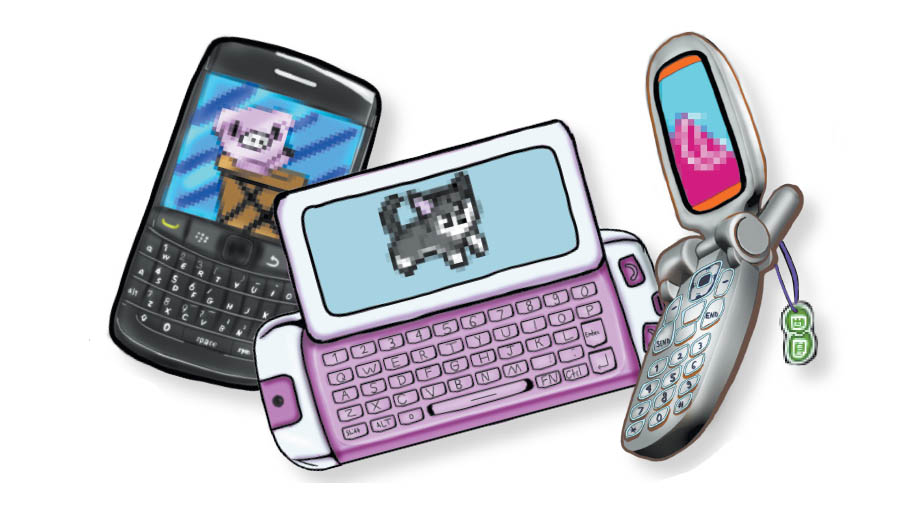Needs vs. wants: When mobile phones became boring
 CREDIT: CALEIGH REID
CREDIT: CALEIGH REIDThe design of mobile phones has become bland over time as necessity has slowly outweighed style.
Remember Lethal Weapon, The Matrix, Tomorrow Never Dies, and Charlie’s Angels?
While many look at that list and see a number of various action movies, some will remember the unique phones featured in each, all from a time when the mobile landscape was still changing and evolving. Back in the 1980s to the 2000s, when mobile phones were still a “want” rather than a “need,” these devices were still figuring out what they wanted to be.
With that, companies were experimenting with new and innovative ideas, making the chunks of technology in our hands more fun and unique.
The Motorola Razr, Nokia’s 3310, the Ericsson T28, the LG Chocolate, all are products of a time when phones were not only identifiable, but also were actively adapting the space they were in.
Compare that with today, looking at the 15th generation of iPhones and Samsung’s Galaxy S23; just two examples of companies often making similar products from one generation to another with only marginal upgrades.
Some people look at the recent crop of modern smartphones and see companies prioritizing profits as the main reason for the unexciting direction phones have taken.
“The smartphone world has been shepherded by the twin forces of software and economic pragmatism into an endless sea of slightly varied rectangles,” said Technology Writer and Mobile Expert Michael Fisher, who has been integrated in the mobile space since being a contributing editor for Pocketnow since 2012.
While Fisher cited software and the current economic landscape as primary factors, some believe that phones really became boring when they shifted from being a “want” in society to a “need.”
While phones were once solely used for socializing and general communication, phones are now one of the primary tools used for scheduling, educating, communicating, dating, and nearly all avenues of people’s daily lives.
It’s nearly impossible not to need a smartphone for work, for school, or for staying socially active, with mobile phones now becoming an integral part of our lives.
With how often people are accessing and using their phones, it means efficiency and simplicity have become two of the top contributors to phone use and sales.
This means that the fun has been taken out in favour of streamlined design.
“Don’t get me wrong, I still love my smartphones, but you’ve got to admit for the past few years the design language of the whole category has gotten pretty stale.”
While many people miss the fun days of varied designs, unique colours, and mechanical differences from one phone to the next, those days may not be too far off from returning with the return of folding phones.
“If you look at the experimentation and the risks being taken in that space, you get a taste of what it was like to buy your phones in the first decade of the 21st century,” said Fisher.
Already we’ve seen the standard flip style such as 2019s new Motorola Razr, the folding tablet style such as the Google Pixel Fold, the tri-folding large style of Samsung’s upcoming tri-fold Galaxy Fold, and more.
On top of that, various developments in the bending screens, tightening hinges, and more are being released with each new variant.
While phones will eventually again return to a time of boring simplicity, it’s a sight for sore eyes to see another mobile boom may be on the horizon.






